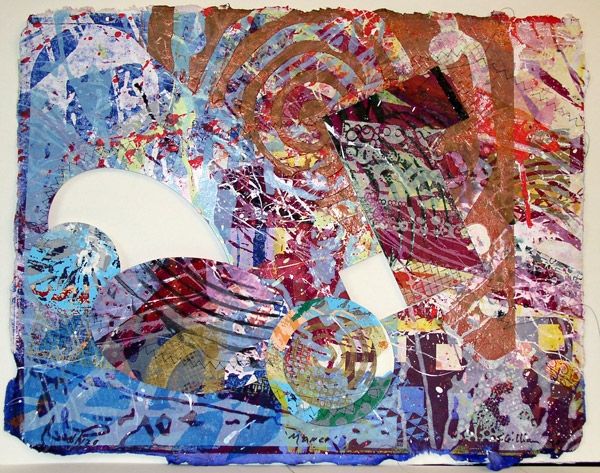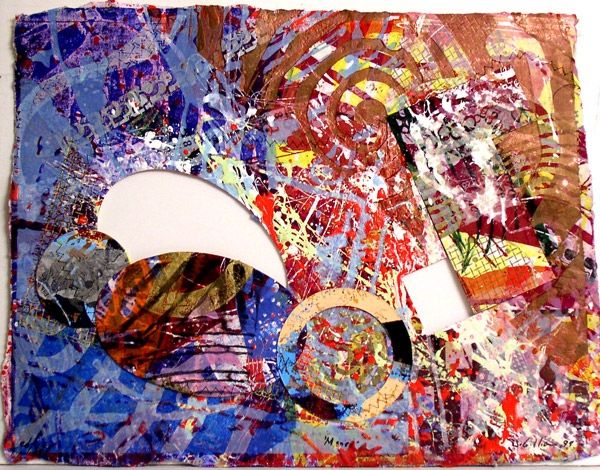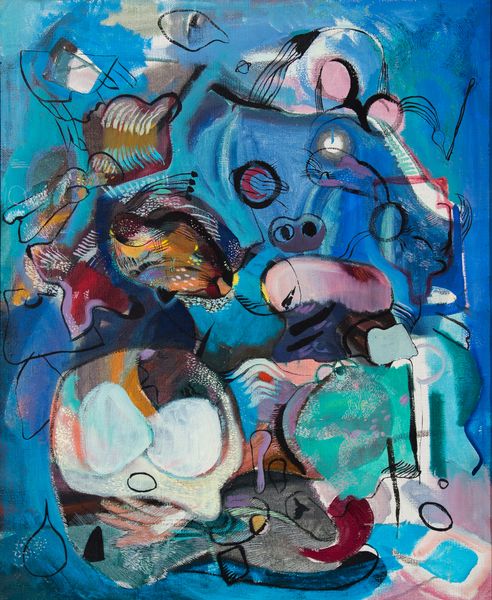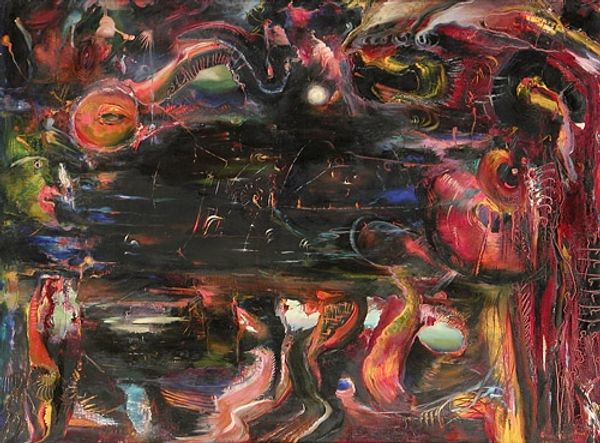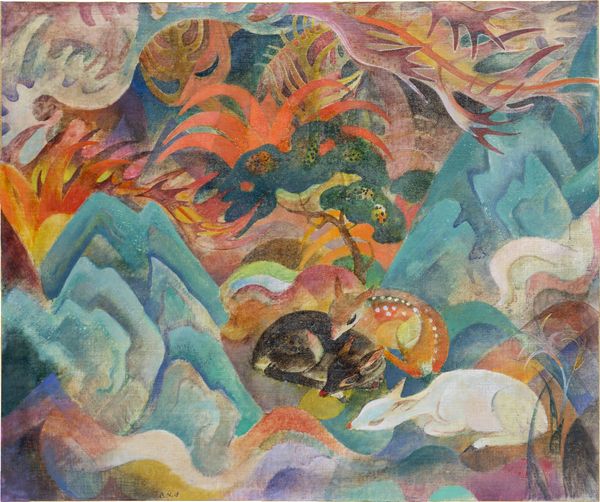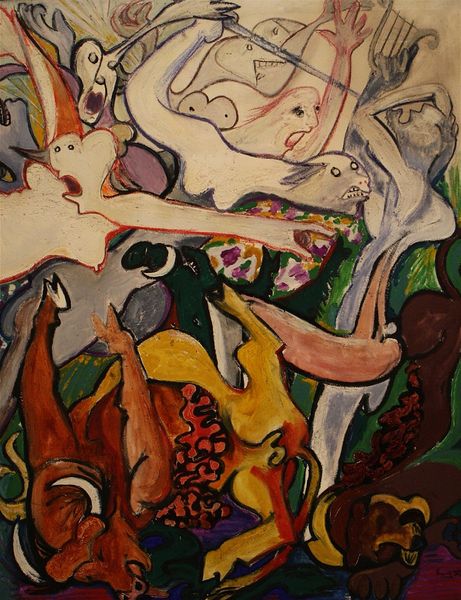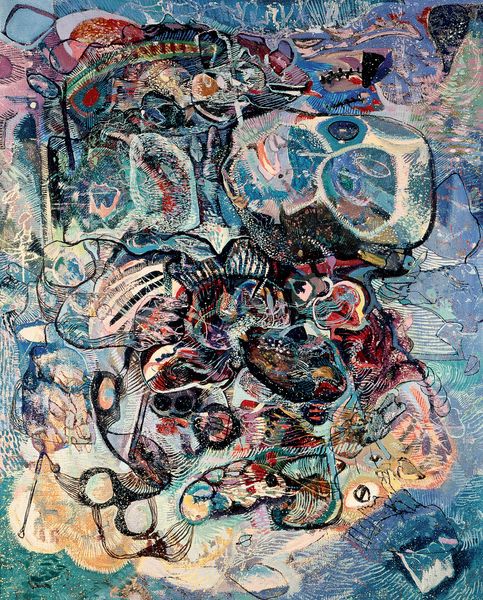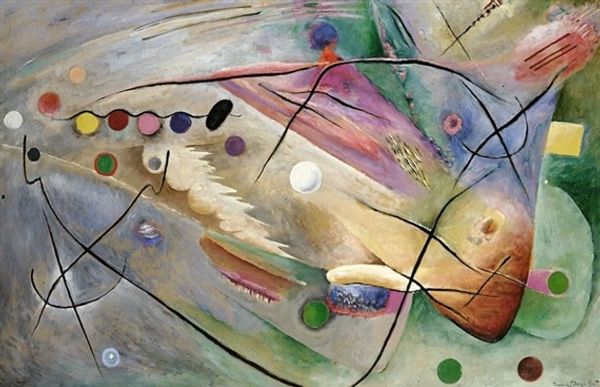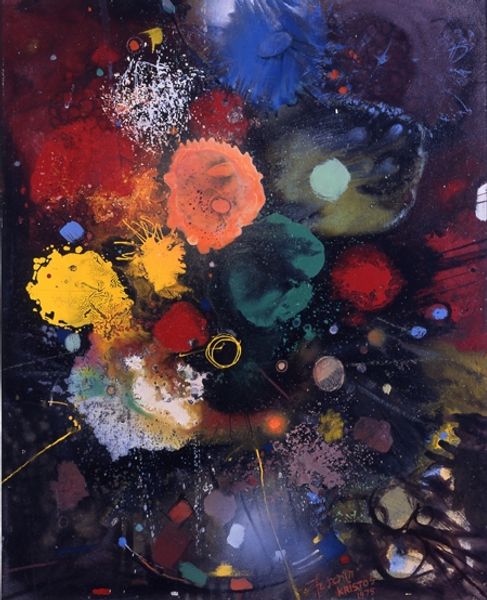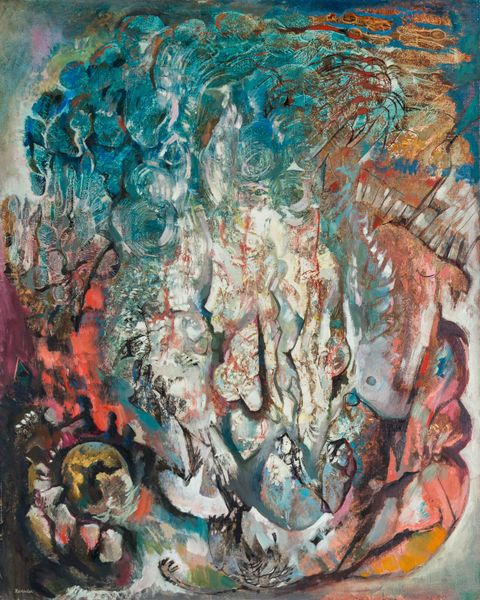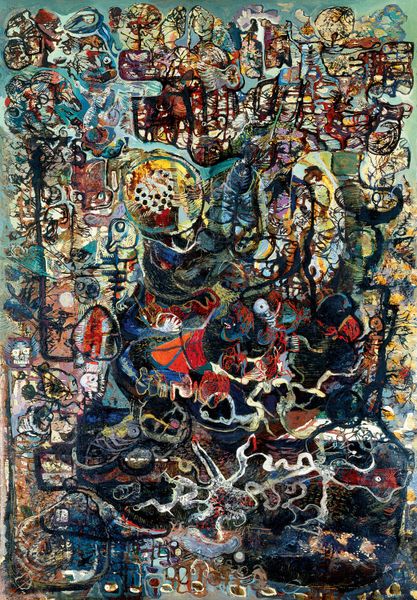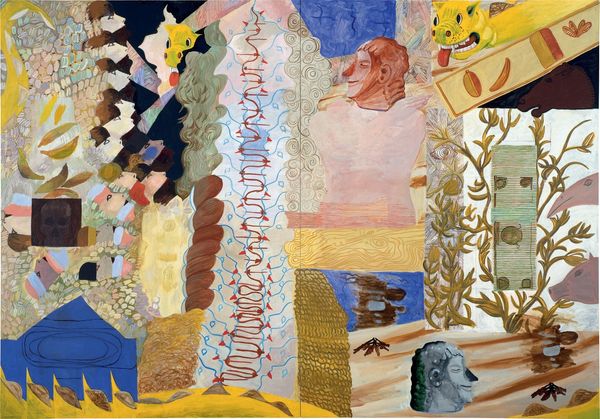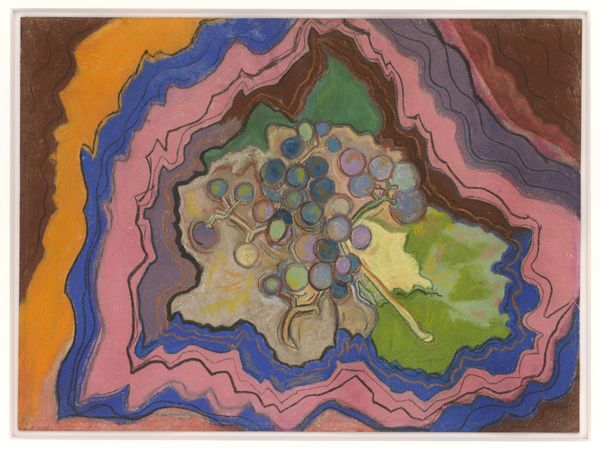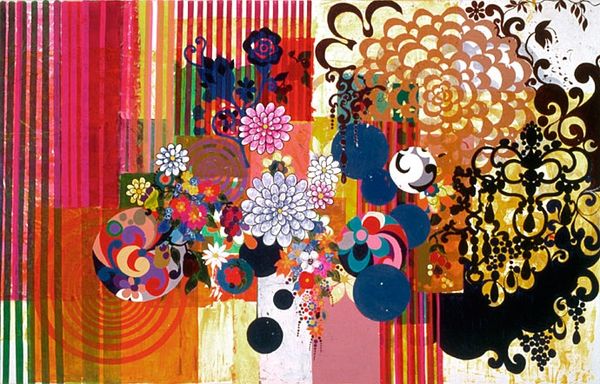
Copyright: Endre Rozsda,Fair Use
Curator: This is Endre Rozsda’s “Revenant Perpétuel,” painted in 1951. Quite a mouthful, isn't it? A perpetual return. He uses acrylic paint here, building up these incredible layers...what’s your first impression? Editor: A visual fever dream. It's like peering into someone's subconscious. All these shapes seem to swim in and out of focus. Are we looking at joy or terror? Or, perhaps, a little of both? Curator: Both, I think. Rozsda called himself a "dream digger," and this painting feels exactly like that—digging around in the messy, chaotic stuff of dreams, full of unexpected images and half-formed ideas. There’s something almost childlike, too, in its…honesty. Editor: Interesting. Rozsda, part of the European avant-garde in the mid-20th century, was exploring identity at a time of immense political upheaval. Post-war trauma, displacement...doesn't this swirl of faces, figures, and symbols evoke that search for meaning and stability? Curator: Absolutely! He fled Hungary and later lived in Paris. Perhaps "Revenant Perpétuel," isn't just about dreams; it also deals with the ever-returning anxieties of displacement. Look at how some shapes appear like eyes peering out—do you see that? It suggests a persistent sense of being watched, doesn't it? Editor: Indeed. That unsettling gaze speaks volumes. And consider how "Revenant Perpétuel" complicates simple binaries—abstraction versus figuration, East versus West—Roszda weaves all those contradictions together. This act of refusing easy categorization…it becomes a kind of defiant political statement, wouldn’t you agree? Curator: A delicious refusal, wouldn't you say? And such glorious colours swirling together… pinks and yellows and teals jostling with blues and browns. Look at the top-left of the canvas where one face-like cluster melds into a second one. There are also shapes within that feel like eyes, as if staring back at us. It's kind of wonderful how he manages to hold all those seemingly disparate things together. It doesn't quite settle, does it? Editor: Not at all. Rozsda demands our active participation. To look closely. To question. To feel. "Revenant Perpétuel" becomes less a statement and more a complex question posed to its viewers. Curator: I think that's wonderfully put. It really is a question mark of a painting, isn't it? One that keeps inviting you to revisit it. To come back again, perpetually. Editor: An apt title then! It certainly offers a rich perspective on art as a dialogue across time and experiences.
Comments
No comments
Be the first to comment and join the conversation on the ultimate creative platform.
